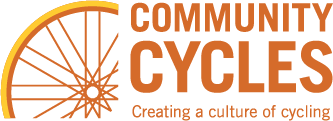Making the Most of Community Engagement
There is no doubt that arguments surrounding changes to transportation infrastructure can get heated. Sometimes the fire is fueled by prejudices (against government, for example) or hostility toward particular elected leaders. Worse, the debate often happens on social media like Facebook or Next Door, where the algorithms reward negativity, and civility is usually optional. For many, it’s a scene so unpleasant that they just choose not to engage. But, truly, city planners need us to engage. So this is a short guide on how to engage respectfully and most effectively.Ask Questions and Beware Conclusory Statements
Probably the single most effective change we might collectively make in how we engage with one another on challenging issues is to frame our concerns as questions, rather than conclusions of fact. This approach invites dialog rather than entrenchment. So, for example, if you are concerned that a particular roadway redesign could result in an increase in cut-through traffic in nearby neighborhoods, it’s best to ask, “How can we be sure that this design option won’t result in more cut-through traffic?” Or “What can we do if this design option results in more cut-through traffic?
Speak to Concerns and Desired Outcomes
It is immensely helpful to communicate to City staff what you want transportation to do for the community. So, for example, you might helpfully ask that a roadway redesign provide physical protection for cyclists or pedestrians without increasing cut-through traffic on neighboring streets. If you have the needed technical expertise, you might even suggest that City staff consider one or another design alternatives. But it’s less helpful to rally neighbors for (or against) a specific design unless and until City staff have indicated that the option is or isn’t viable or planned. Support or opposition to a design proposal often masks the assumptions that drive preference and speaks only indirectly to the desired outcomes. Moreover, it tends to discourage creative thinking about other ways the desired outcomes for the roadway might be achieved.
Don’t Presume Ill Intent or Incompetence
Spend any time on Next Door and you’ll find residents suggesting that City staff aren’t listening to the community, are trying to wreck the city, or are so incompetent that their roadway redesigns make things worse for everyone. In reality, City staff do listen to the community, just not exclusively to the segment of the community that is doing the complaining. They are charged with balancing many competing interests and they often face challenging design constraints ranging from limited road space (to allocate among different users) to floodplain considerations to the needs of emergency service providers to the needs of vulnerable road users. They also have data sets, modeling tools, and technical knowledge that few others in the community are likely to have. For these reasons it is better to ask (see section above) what tradeoffs informed a particular design decision than to assume that City staff are incompetent or deaf to community concerns. There may (still) be some transportation departments like that in the United States, but not in Boulder.
Misinformation & Disinformation
Beware Unfalsifiable Claims of Fact – When a claim cannot be invalidated, it is wise to treat the claims as false. So, for example, if someone asserts that, no matter what City officials have said, those officials have already chosen a particular design option, it is certainly best to treat that claim as false. Similarly, if someone claims that City Council members are pushing for densification because they're in the pockets of developers and landlords that is conspiracy thinking
Look for Information from Groups of Technical Experts in the Relevant Field – Transportation engineering is not a simple science and nearly every aspect of design involves tradeoffs. Happily, there are resources now available that can help community members understand what tools are available to address a particular design challenge. You can find excellent design guides from the National Association of City Transportation Officials here.
Resources
Report a Maintenance Problem, City of Boulder
City of Boulder: To report a street maintenance related problem (potholes on the bike path, paths blocked by snow), complete the form and provide your contact information.
Report County Road Service Issue
Boulder County: To report a street maintenance related problem (potholes on the bike path, paths blocked by snow), complete the form and provide your contact information.
Report an Aggressive Driver
If you find yourself in a situation with an aggressive driver, remember you can dial *CSP (*277), free of charge. Report “real time” aggressive driving behavior to the Colorado State Patrol.
Report a Close Call – Inquire Boulder
Have you had a close call with a bicycle, pedestrian or motorist? This data is important and used in analysis of the safety of our streets.
Bike Theft Prevention & Registration
Learn tips and tricks for preventing your bicycle from being stolen, like registering your bike on Bike Index and knowing which lock to use how to properly use it.
Join the Advocacy Committee
We aspire to help Boulder become a dynamic and sustainable city that maximizes the safety, comfort, and convenience of its residents and prioritizes long-term environmental stewardship.
